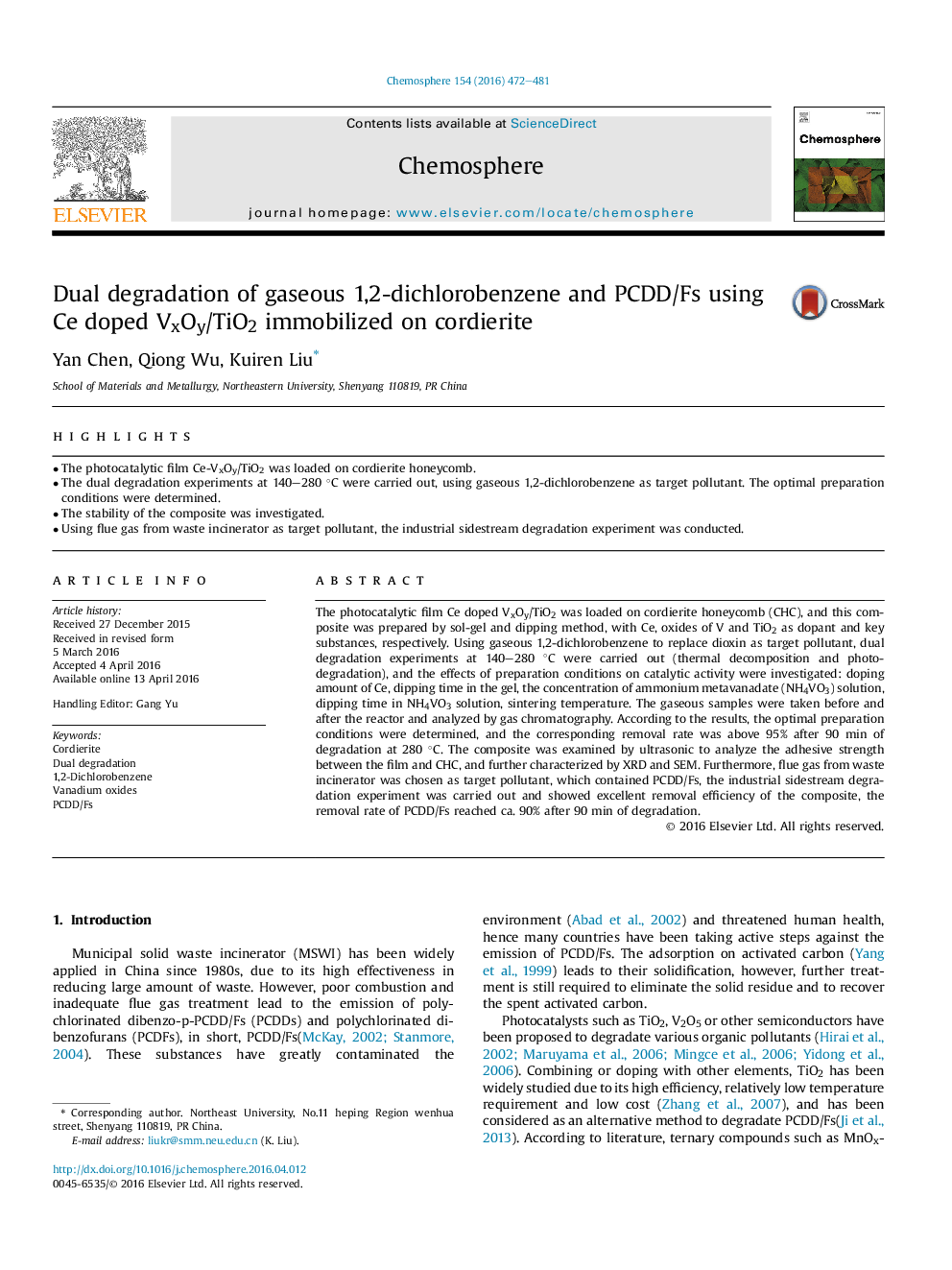| Article ID | Journal | Published Year | Pages | File Type |
|---|---|---|---|---|
| 6306646 | Chemosphere | 2016 | 10 Pages |
â¢The photocatalytic film Ce-VxOy/TiO2 was loaded on cordierite honeycomb.â¢The dual degradation experiments at 140-280 °C were carried out, using gaseous 1,2-dichlorobenzene as target pollutant. The optimal preparation conditions were determined.â¢The stability of the composite was investigated.â¢Using flue gas from waste incinerator as target pollutant, the industrial sidestream degradation experiment was conducted.
The photocatalytic film Ce doped VxOy/TiO2 was loaded on cordierite honeycomb (CHC), and this composite was prepared by sol-gel and dipping method, with Ce, oxides of V and TiO2 as dopant and key substances, respectively. Using gaseous 1,2-dichlorobenzene to replace dioxin as target pollutant, dual degradation experiments at 140-280 °C were carried out (thermal decomposition and photodegradation), and the effects of preparation conditions on catalytic activity were investigated: doping amount of Ce, dipping time in the gel, the concentration of ammonium metavanadate (NH4VO3) solution, dipping time in NH4VO3 solution, sintering temperature. The gaseous samples were taken before and after the reactor and analyzed by gas chromatography. According to the results, the optimal preparation conditions were determined, and the corresponding removal rate was above 95% after 90 min of degradation at 280 °C. The composite was examined by ultrasonic to analyze the adhesive strength between the film and CHC, and further characterized by XRD and SEM. Furthermore, flue gas from waste incinerator was chosen as target pollutant, which contained PCDD/Fs, the industrial sidestream degradation experiment was carried out and showed excellent removal efficiency of the composite, the removal rate of PCDD/Fs reached ca. 90% after 90 min of degradation.
